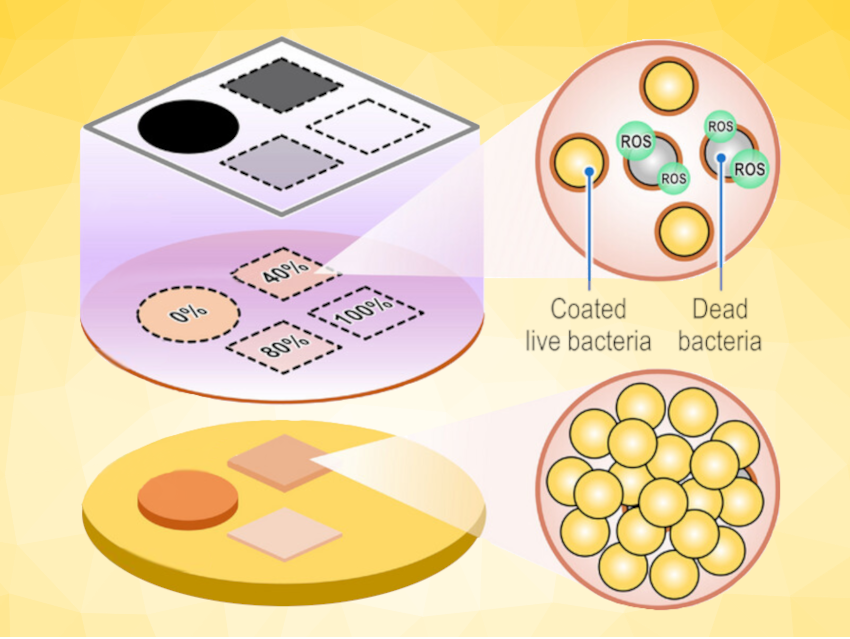Controlling the growth of bacterial biofilms in a specific pattern could be useful, e.g., for the study of cell-to-cell interactions. Existing biopatterning strategies often require sophisticated instruments and complex procedures or have low patterning resolutions. It can also be difficult to create biofilm patterns with different maturities/densities in one go. Thus, it would be useful to develop a straightforward and cost-effective strategy for generating living bacterial biofilms with different shapes in high spatial resolution.
Chunlei Zhu, Nankai University, China, and colleagues have developed a photodynamic biopatterning technique for the creation of such patterned living bacterial biofilms. First, the team synthesized an aggregation-induced emission (AIE) photosensitizer (MeO-TSP), which has a donor-π-acceptor (D-π-A) structure with a pyridinium unit. MeO-TSP shows strong photodynamic antibacterial activities, with a killing efficiency of, for example, over 99 % at a low concentration (2 mM) for the clinically relevant methicillin-resistant Staphylococcus aureus (MRSA).
The researchers then combined MeO-TSP with custom-designed photomasks featuring both opaque and transparent regions (pictured schematically). By shining light through the photomasks onto photosensitizer-coated bacteria, they successfully fabricated bacterial biofilms in different shapes with a high spatial resolution (ca. 24 µm) for both mono- and multispecies bacterial systems. The strategy can also be used to obtain living bacterial biofilms with graded maturities at one time by varying the light transmittance/opacities of the photomask regions. The developed approach could have applications, e.g., in information storage/encryption or antibiotic screening.
- Photodynamic patterning of living bacterial biofilms with high resolutions for information encryption and antibiotic screening,
Minghui Xiao, Ke Xue, Hao Fu, Jiaxin Wang, Shuyi Lv, Zhencheng Sun, Cheng Wang, Linqi Shi, Chunlei Zhu,
Aggregate 2024.
https://doi.org/10.1002/agt2.532




